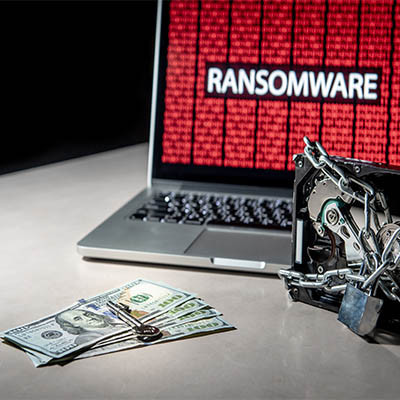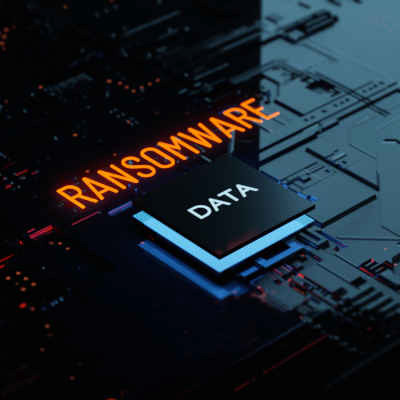At this stage, you don’t need us to tell you that ransomware is bad. This threat has gone from being an emerging problem to one that is now sensationalized and commonplace in headlines and news stories around the world. According to a recent study, even organizations that do pay the ransom when they get infected by this threat are playing with fire.
BNMC Blog
Ransomware is a threat that has seen exponential growth in recent years. We have witnessed it grow from a minor annoyance to a considerable global threat. Even the U.S. Justice Department has issued a declaration that they would begin investigating ransomware in much the same way that they would terrorism cases. Let’s take a look at how this policy could change the way your business should respond to these threats.
The recent hack of Colonial Pipeline has led to no shortage of problems, chief among them gasoline shortages all across the east coast of the United States. The pipeline’s operations may have been restored, but the question still remains: what could have been done to stop it, what can we learn from this incident, and what changes can we expect to see as a result?
Ransomware attacks are notorious for their expense to the victim—largely because of the various costs that come along with successful ransomware infections, including many that might not be expected at first. Let’s review some of these costs, if only to reinforce the importance of avoiding ransomware as a rule.
Around this time each year, there’s a tradition of people telling stories that have been passed down for years. We wanted to participate this year, so we’ve decided to reimagine a true holiday classic: Die Hard.
Let’s consider how the action may have played out differently if the movie’s events were to take place today…
Ransomware has become a favorite attack vector for hackers - after all, for them, it’s pretty much a no loss game. They either get paid, or they move on to their next target. Unfortunately, cyberattackers that dispatch ransomware often do get paid, and these payments can sometimes come from a surprising source: cybersecurity firms.
By now everyone knows about ransomware, the dastardly strand of malware that encrypts data (or the drives it’s stored on) and sends the user a message demanding payment in a certain amount of time before the data is deleted forever. To add a little more menace to an already stressful situation, the message includes a countdown clock. If it sounds like a bad situation, rest assured it is. How could it get worse you ask? Simple, make it more difficult to stop.
Ransomware doesn’t discriminate with its targets, as the city of Atlanta, Georgia now knows so painfully well. The city became the target of a ransomware attack that crippled many of its critical system workflows. The municipal government suffered from one of the most advanced and sustained attacks in recent memory.
Put yourself in the shoes of a cybercriminal. If you were to launch a ransomware attack, who would be your target? Would you launch an indiscriminate attack to try to snare as many as you could, or would you narrow your focus to be more selective? As it happens, real-life cybercriminals have largely made the shift to targeted, relatively tiny, ransomware attacks.
Students generally love it when classes are cancelled for whatever reason, but thanks to a cybercriminal group called TheDarkOverlord Solutions, a school in Flathead Valley, Montana was disrupted for an extended period of time. This downtime resulted in a disruption of operations for over 30 schools, as well as the threat to the personal information of countless teachers, students, and administrators due to a ransomware attack.
When it comes to Internet threats, ransomware is the one that causes the most fear, especially for small and medium-sized businesses, as it should. According to the Cisco 2017 Annual Cybersecurity Report, ransomware is growing at a yearly rate of 350%. It’s time to make sure that you’re doing what you can to stop your business from becoming another ransomware statistic. Here’s five very good tips that will help you avoid becoming a victim of the next big ransomware attack!
Ransomware is a tricky piece of malware that locks down the precious files located on a victim’s computer, then (in theory) will return access to them when a ransom has been paid. Depending on the files stored on a victim’s computer, they might simply blow it off and not worry too much about losing access to a couple of pictures or videos--but what if this ransomware threatened to expose your web browsing history?
On May 11th, 2017, the world was introduced to the WannaCry ransomware. The ransomware spread around the globe like wildfire, infecting hundreds of thousands of devices and catching many major organizations and businesses by surprise. The full extent of the ransomware’s damage is still being assessed, yet, one thing we do know: this whole fiasco was preventable.
If fiscal reasons have stopped you from securing your network against ransomware thus far, you may want to reconsider your strategy. Not only are attacks still becoming more and more prevalent, but the developers of ransomware have lowered the price of admission for aspiring cyber criminals. Fortunately, there are some steps you can take to keep your business protected against a ransomware attack.
Ransomware is still on the rise, and the Federal Bureau of Investigation has labeled it as one of the biggest dangers to businesses of all kinds. Compared to other methods of spreading malware, ransomware has a unique return on investment that keeps hackers wanting more. One new variant of ransomware uses a phishing attack that’s tailored to your real-world address, which is exceptionally concerning for victims.





















